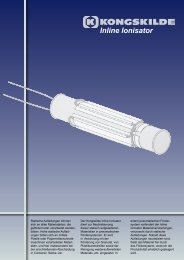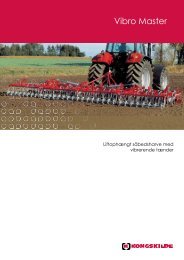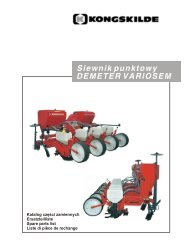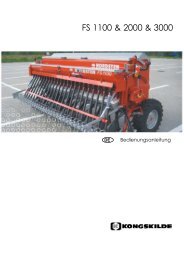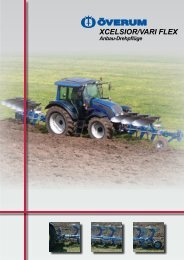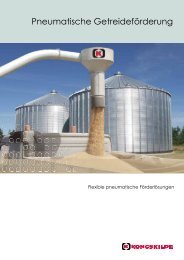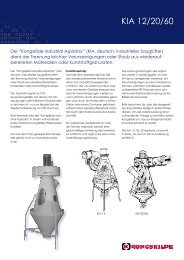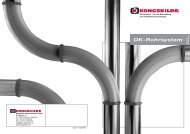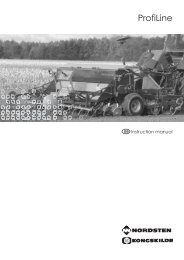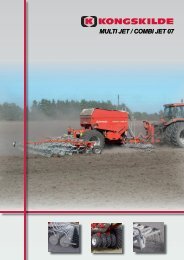Conveying Capacity - Kongskilde
Conveying Capacity - Kongskilde
Conveying Capacity - Kongskilde
Create successful ePaper yourself
Turn your PDF publications into a flip-book with our unique Google optimized e-Paper software.
GB<br />
Contents<br />
Safety .................................................. 2<br />
First start-up Instructions ..................... 2<br />
Starting and Stopping .......................... 3<br />
Adjustment for max. <strong>Capacity</strong>.............. 3<br />
Piping Instructions ............................... 4<br />
Selection of Intake Nozzle ................... 5<br />
Safety<br />
1. Take care that all the guards<br />
are in correct position and fixed<br />
during operation.<br />
2. Always stop the machine prior to<br />
greasing, adjusting or repair.<br />
3. Blower noise can be irritating.<br />
Ear protection should be used<br />
under long-term continuous<br />
exposure.<br />
First Start-up<br />
Instructions<br />
1. All wiring must be made by a<br />
certified electrician.<br />
2<br />
Min. fuse at 3 x 380 V<br />
(recommended):<br />
SUC 100E: 25 Amp.<br />
SUC 150E: 35 Amp.<br />
SUC 200E: 35 Amp.<br />
SUC 300E: 63 Amp.<br />
SUC 500E: 100 Amp.<br />
Clearing a blocked Pipe System.......... 5<br />
Bin clean-out........................................ 5<br />
Maintenance ........................................ 6<br />
Trouble shooting .................................. 7<br />
<strong>Conveying</strong> <strong>Capacity</strong>............................. 8<br />
Principle of Operation ........................ 10<br />
Function and use of Air Regulator ..... 11<br />
Technical Data ................................... 12<br />
4. Use eye protection when working<br />
in the vicinity of the intake<br />
nozzle. Kernels can fly out of the<br />
secondary air opening, causing<br />
eye damage if proper protection<br />
is not worn.<br />
5. Avoid open suction pipes.<br />
Clothing or objects can be<br />
drawn into the machine and<br />
cause injury to a person or<br />
damage to the machine.<br />
2. Make sure that the direction of<br />
rotation of blower and rotary<br />
valve is correct (see arrows on<br />
blower and rotary valve).<br />
3. Check that the belt tension is<br />
correct.<br />
4. Make sure that all bolts are<br />
tightened. Retighten the bolts<br />
after the first day of operation.<br />
6. After conveying treated grain the<br />
machine and the pipe system<br />
should be carefully cleaned out.<br />
7. Always use a discharge cyclone<br />
to decelerate the grain and to<br />
separate it from the air stream.



